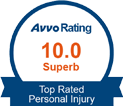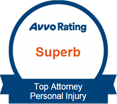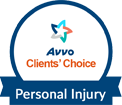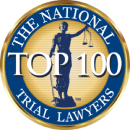Involvement in an accident can dramatically change your life, prompting you to seek avenues to recover from the losses you suffer. As a multi-vehicle accident victim, you are exposed to serious harm, and you can exercise your right to hold the responsible parties liable. Doing so gives you a better chance of receiving compensation to help you rebuild your life. When assessing your case, you need to consider several factors, like liability, causation, and the party who owed you a duty of care.
If you are a first-time accident claimant, the process may be technical and long, so partnering with an experienced personal injury attorney is advisable. Their participation in your case should help you pursue a compensatory claim more smoothly. Further, your attorney should maintain an open communication line to ensure you understand the important steps after a multi-vehicle accident.
Why a Multi-Vehicle Accident Requires an Immediate Reaction
A typical road accident involves two vehicles colliding unexpectedly, resulting in possible injuries and vehicle damage. On the other hand, a multi-vehicle accident involves three or more cars involved in a crash, creating an even more serious situation for the involved parties.
Although multi-vehicle crashes are less common, their effects are damaging to you as the victim, as you risk facing permanent injuries. Further, the increased number of victims often means that your vehicle damage may be worse, as you may suffer impacts from the front and back or from two sides.
Multi-vehicle accidents occur from various causes, but among the most common is tailgating. The phenomenon involves following a vehicle ahead of you too closely, making it difficult to react on time in the event of sudden braking. Consequently, the driver liable for tailgating may hit the car in front, causing it to jerk and hit the car ahead. If so, accident investigators classify the crash as a chain reaction pile-up.
After being involved in a multi-vehicle accident, you need to act fast and secure the necessary help to remedy your situation. Seeking help sooner gives you a better opportunity to establish what happens after a multi-vehicle crash and what to do in these situations. Immediate help includes medical assistance, calling your personal injury attorney, and contacting emergency response teams to move your car away.
What to Do After a Multi-Vehicle Accident
After contacting the necessary parties immediately after the multi-vehicle accident, you can start the legal analysis to determine the most suitable process after a multi-vehicle accident. Since you are now in contact with your attorney, you should schedule a meeting to discuss the accident details. Doing this helps you better prepare for your compensation case if you pursue legal action.
Upon meeting with your attorney, they will guide you through the following procedures after the multi-vehicle accident:
1. Assessing the Conditions Associated With the Multi-Vehicle Accident
The nature of a multi-vehicle accident varies in each case, as circumstances are different. You, therefore, need a good understanding of the conditions associated with your accident to ensure you understand the most reasonable course of action to pursue.
Establishing the main conditions associated with your accident requires you to revisit the circumstances shortly before impact, which can be difficult. For example, if the crash was sudden, you may have needed more time to take in your environment and foresee the accident. Alternatively, your mind may be under significant stress after the accident, making it more challenging to recount the facts.
Despite this, your personal injury attorney can provide prompts to help establish important factors related to the accident. Since it is a multi-vehicle incident, remembering even the slightest details could provide insight into the possible triggers that resulted in the crash. Some factors that could help you build a case include:
Whether a Motorist Failed to Observe Lane Discipline
Sticking to a specific lane is essential, allowing other drivers to maneuver when necessary, especially when accelerating. Lane discipline also involves indicating appropriately to ensure other motorists know your intention to switch lanes.
Based on this, failure to observe lane discipline can confuse other road users, making it easier to cause a multi-vehicle crash. If you remember a driver swerving without indicating or accelerating in the wrong lane, it could help establish the primary party liable for the accident.
Whether a Motorist was Distracted When Driving
Distracted driving is a common problem among many drivers, and it often involves using your phone while behind the wheel. Additionally, other passengers, loud music, and large visual blocks like maps can cause distractions, exposing you and other road users to a possible multi-vehicle accident.
Although you may not have seen another driver’s interior to establish whether they were distracted, you can rely on outward indicators. For example, if the vehicle moved slowly with sudden acceleration, it could indicate a lack of concentration and a proper reaction to the moving traffic.
The Road and Weather Conditions Before the Accident
External factors may also contribute significantly to the multi-vehicle accident, especially if you drove in extreme conditions. You can thus provide details on whether you drove in heavy downpours, under low-visibility conditions, or in other forms of extreme weather.
Similarly, bad road conditions may contribute to a multi-vehicle accident, making it important to mention the necessary facts to your lawyer. For example, if a roadblock causes a driver to brake suddenly, resulting in multiple crashes, the information can help determine the parties at fault. This way, you can structure your case better and increase your chances of a positive outcome.
Whether a Driver was Intoxicated
Drunk driving can also cause catastrophic accidents, including a multi-vehicle crash. If you noticed that one of the motorists was intoxicated after the accident, inform your personal injury attorney as soon as possible to determine their liability.
Your attorney may advise you to include these reports in your testimony if you provide oral evidence, and you will create a more persuasive case. Despite this, the accused party may counter the claims and provide evidence to support their position during the trial, so you need to be prepared.
2. Establishing Negligence
After assessing the main factors related to your case, your personal injury attorney should help you establish whether negligence resulted in the accident. Determining that one or more parties were negligent is critical, as they are legally liable for the harm caused during the multi-vehicle accident.
Due to this, you must carefully assess your case facts and consider all the parties present after the crash to properly establish negligence. You must also ensure that your analysis satisfies the four elements of negligence and that you have sufficient proof to support the claims.
The four elements that must be present in a negligence claim are:
Establishing a Duty of Care
A duty of care exists in almost all aspects of life, including when driving. They may be drawn from legal statutes or common practice, as expected of a reasonable person. Based on this, the duty of care to drive carefully and responsibly applies to every motorist, regardless of whether a specific law is attached to the expectation.
Despite the multiple ways of interpreting whether a duty of care exists, you need to support your position using legal structures to ensure your case is compelling. Therefore, your personal injury attorney will obtain relevant legal provisions to demonstrate that all drivers should respect road regulations.
Additionally, you may present the reasonable person test to determine whether parties acted reasonably before the accident. By applying legal guidelines, a reasonable person would observe the duty of care imposed on drivers, meaning that the multi-vehicle accident should not have occurred.
Showing that a Breach Occurred
After establishing that a duty of care existed for all drivers to observe, you must demonstrate that one or more parties breached it, resulting in the accident. Establishing a breach of duty often requires you to identify a party at fault beforehand, so you need to consolidate the information you gathered after the crash.
When preparing for this element of negligence, you must demonstrate that the party in question was aware of the standard of conduct expected of drivers but failed to observe it. For example, they may have been driving beyond the speed limit, contrary to road signs within the area.
Similarly, failure to observe lane discipline and driving when intoxicated are common examples of complete disregard for the existing duty of care. Your personal injury attorney’s goal is to help you structure the information you provide to support the claim, so your recounts of what happened should be as detailed as possible.
Demonstrating Causation
After identifying the liable party and establishing that they breached a duty of care, you should also work on showing that their actions were the primary cause of the accident. The number of parties in question may vary in a multi-vehicle accident, making it important to keep track of all parties’ contributions to the incident.
For example, if one driver ignored a red light, causing them to slam into the driver ahead of them who was drunk, they may cause a chain reaction pile-up. You, therefore, need to gather information regarding the state of each liable party to ensure that your claims align with the causation element.
Also, multiple-cause cases are only sometimes straightforward, as you may have slight liability for the case. If so, consult your personal injury attorney to establish whether your actions are directly linked to the other parties’ causal chain. Determining this factor beforehand helps establish how much you can claim from other liable parties in the accident.
Showing that You Suffered Damages from the Breach
Suffering damages is an important element in establishing negligence, as it demonstrates the effect of a breach of duty. This element also helps justify your need for compensation from the liable parties, allowing you to recover from the incident.
You can justify your claim of suffering damages by presenting medical information on your injuries. Further, vehicle repair receipts are essential to show that the accident cost you significantly, making it important to recover your funds.
If your injuries are severe and require drastic medical interventions, you will have an easier time convincing the judge of the damages you suffered, as they will be evident. Nevertheless, you still have a rightful claim to compensation if the damages you present require more proof.
Examples of claims to present to the court as damages suffered include:
- Medical expenses
- Loss of wages and earning capacity
- Property damage
- Loss of consortium
- Recurrent medical costs
3. Gathering Evidence
After determining the liable parties in your case and establishing that negligence occurred, your attorney should help you gather evidence for your lawsuit. Obtaining evidence can be tedious, as it may require you to engage with the opposing parties and request unrelated third parties for their input.
Evidential sources vary depending on the nature of your case, so you need to work closely with your attorney to establish the most compelling sources. Some important evidence to obtain includes:
Video Surveillance Footage of the Accident
Many highways have cameras mounted to track vehicle speed and movement, making them a useful evidential source in a multi-vehicle accident. Although the surveillance footage may be available, you must consult the appropriate authorities to receive permission to check the video footage.
Based on this, you must work with your personal injury attorney to contact the road and safety department responsible for road surveillance. Your lawyer can present documents to show the intention to use the footage for lawful purposes in pursuit of rightful compensation.
After presenting the request, you may have to wait a few days or weeks before receiving a response on whether the surveillance footage is accessible. Sending an early request is thus advisable to prevent delays in filing your compensation suit.
Additional surveillance footage sources include dashboard camera recordings in your or a third party’s car. If you ask the person to provide the footage for legal use, you have a better chance of obtaining it, provided your attorney can justify the request.
Witness Testimonies
If parties were present at the accident scene after it occurred, they could also provide important evidence to support your case further. Their role is to elaborate on the liable party’s omissions that resulted in a multi-vehicle crash from an outsider’s point of view. A witness's testimony is essential because it corroborates additional sources of proof to promote credibility.
Once your personal injury attorney contacts potential witnesses for your case, they will give them pointers on how to relay information during the hearing. The process does not include coaching the witness to alter their statement to present more advantageous details for your case. Instead, your attorney’s goal is to ensure the court captures accurate details from the witness and that they are ready for cross-examination.
Expert Opinion Evidence
Some cases may require expert opinion and evidence to elaborate on the severity of the accident and the most probable liable parties. Among the expert witnesses that your attorney may call on is an accident investigation officer who assessed the scene soon after impact.
The court allows expert evidence because it provides an impartial source of information about the incident, promoting a fair case outcome. The impact investigation officer can also estimate the speed at which the liable party moved to demonstrate the risk they posed to other road users. By providing the essential details and additional information that the judge may inquire about, expert opinion evidence can be pivotal for your case.
Medical Reports
Since you are likely to suffer serious injuries after a multi-vehicle accident, you should present medical records of your treatment as additional evidence. The information benefits your case, as it further corroborates your claim for damages and justifies the need for the requested sum.
Obtaining medical records is often straightforward, especially if you require personal record documents. Your personal injury attorney will contact the hospital where you received treatment to retrieve and register the information as additional evidence, giving you a stronger case argument.
Contact a Personal Injury Attorney Near Me
When you or a loved one is involved in a multi-vehicle accident, you need to find a resolution for the pain, suffering, and losses incurred. An excellent starting point is establishing the liability of involved parties and whether you can lawfully claim against them in court. Since you will be navigating technical legal principles, you should work closely with an experienced personal injury attorney to increase your chances of receiving a favorable case outcome.
At The Personal Injury Attorney Law Firm, we provide quality services to help you seek compensation after your involvement in an accident. Our team is ready to support you through your personal injury claim by researching and sourcing evidence to strengthen your claims. Additionally, you can rely on us to represent you during your hearing for a higher chance of persuading the judge to award you the required compensation. Our team can provide legal guidance to anyone involved in a multi-vehicle accident in California. For more information on how to seek compensation, call us today at 800-492-6718.
 800-492-6718
800-492-6718







